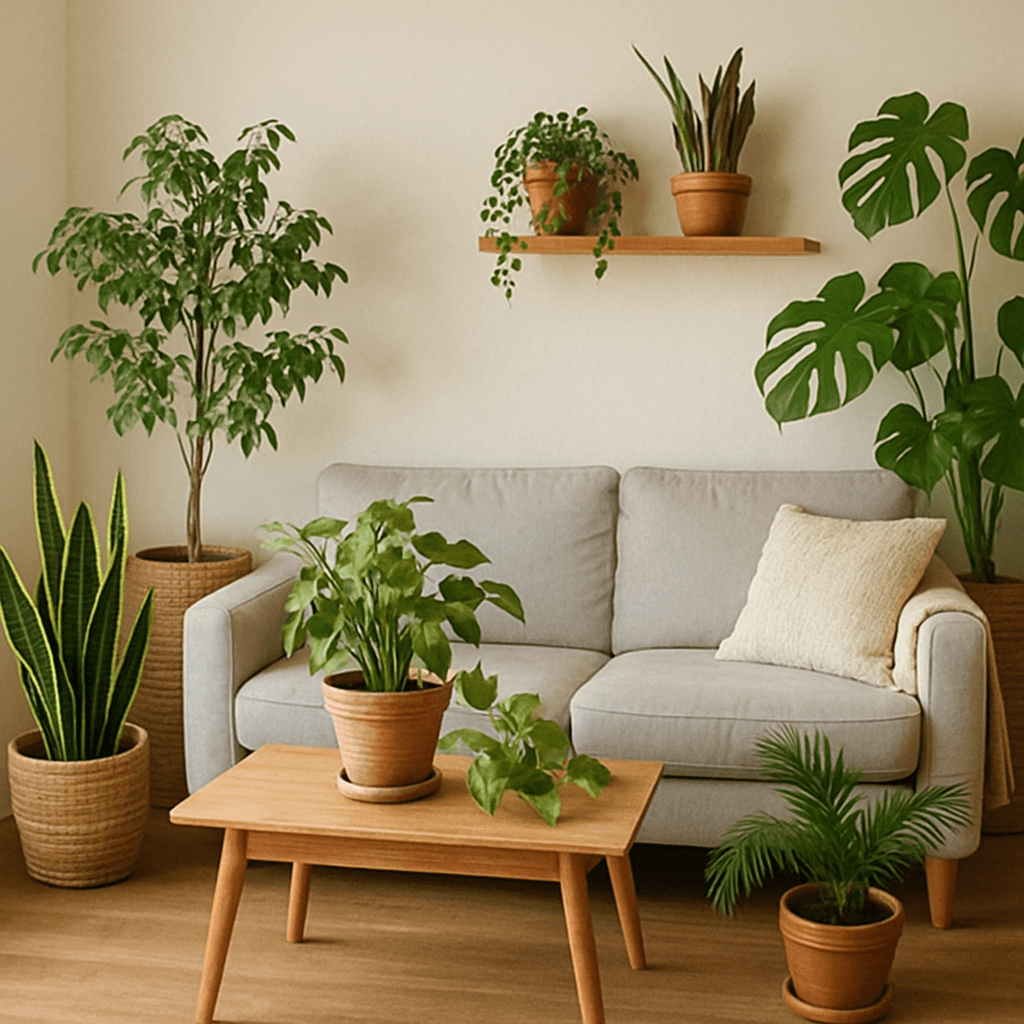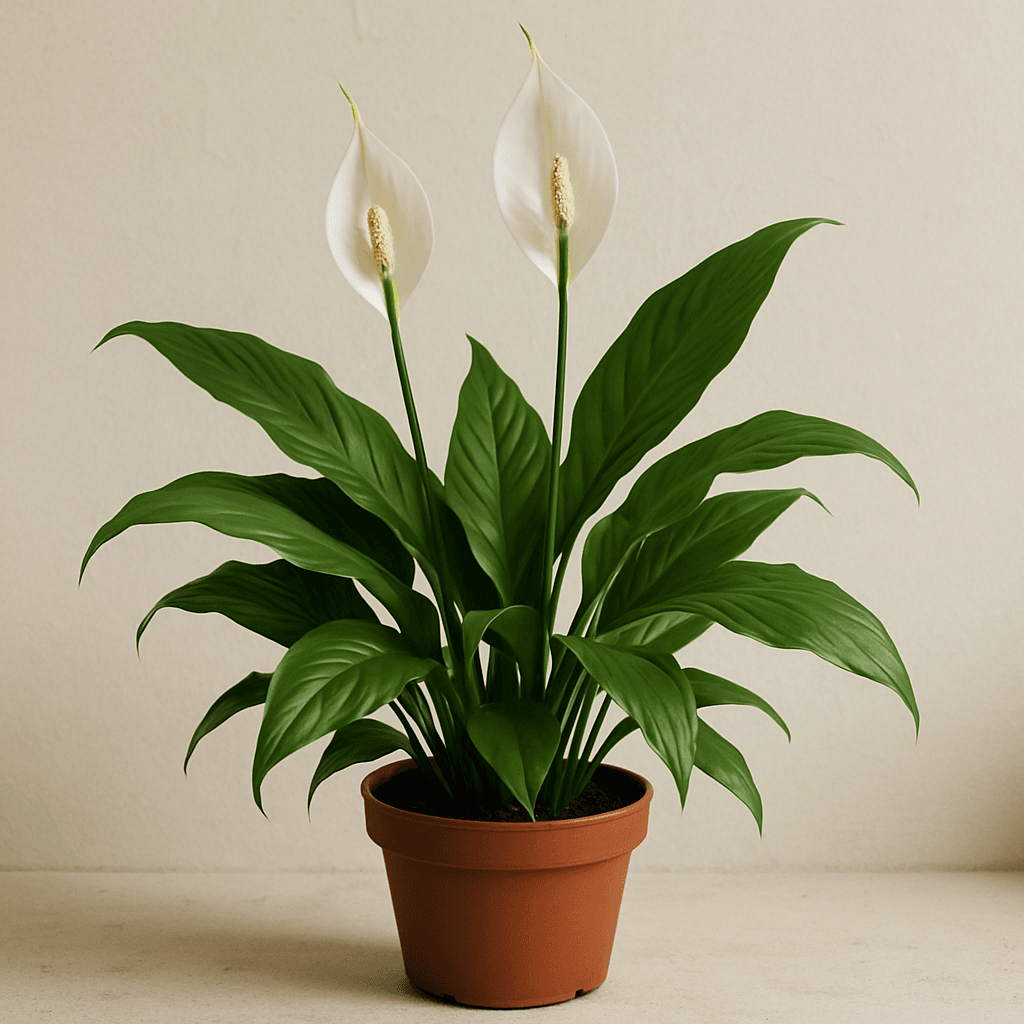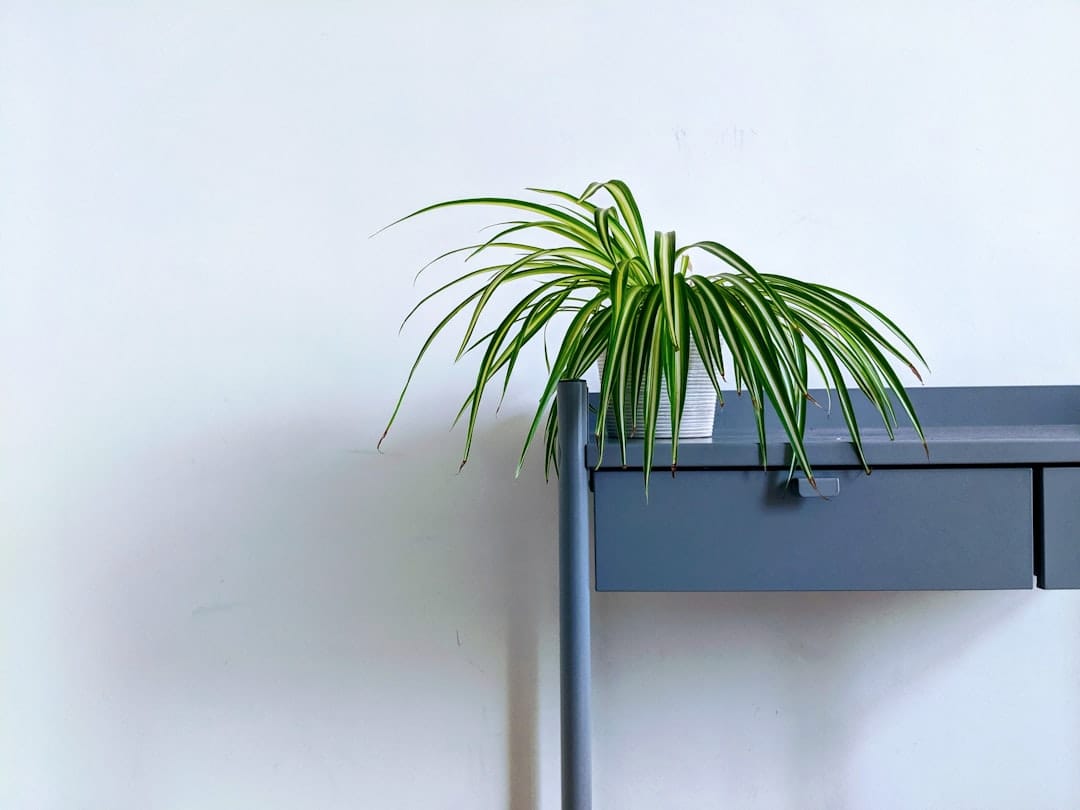Imagina un mundo donde tu hogar no solo se sienta cómodo, sino que también tenga un aire tan fresco como el exterior. Como un experimentado Climatización Profesional, a menudo me preguntan sobre cómo mejorar calidad del aire interior, especialmente en zonas concurridas como el área metropolitana de Los Ángeles. ¿La buena noticia? No necesitas renovar tu... Climatización Sistema para respirar aire más limpio. A veces, una solución simple pero efectiva reside en los purificadores de aire de la naturaleza: Plantas purificadoras de aireAprovechar la belleza natural y la utilidad de las plantas puede transformar cualquier espacio en un entorno más saludable y sereno, ofreciendo atractivo estético y beneficios funcionales.
Las plantas de interior son famosas no solo por su belleza, sino también por su notable capacidad para purificar el aire. Al integrarlas en tu espacio vital, puedes reducir significativamente los contaminantes comunes en interiores. Esto es especialmente beneficioso en zonas urbanas donde... calidad del aire Puede verse afectada por la contaminación. Además, las plantas pueden aportar un toque de tranquilidad y calma, convirtiendo tu hogar en un verdadero refugio del ajetreo de la ciudad.

Las plantas son más que simples elementos decorativos. Purifican el aire de forma natural al absorber toxinas y liberar oxígeno. Este proceso no solo ayuda a reducir los alérgenos, sino que también mejora el bienestar general. calidad del airePueden ayudar a reducir el polvo y los contaminantes, lo que los convierte en una excelente opción para quienes tienen alergias o para cualquiera que busque mejorar su hogar. calidad del aireEl Estudio de Aire Limpio de la NASA identificó varias plantas que pueden purificar eficazmente el aire interior, lo que las hace ideales para personas alérgicas. Este estudio pionero destacó el potencial de las plantas para actuar como filtros de aire naturales, una solución rentable y ecológica.
Además de su capacidad para purificar el aire, las plantas también contribuyen a un clima interior más saludable al regular los niveles de humedad. Esto puede ser especialmente beneficioso en climas secos o durante los meses de invierno, cuando la calefacción interior puede provocar sequedad del aire. Asimismo, la presencia de plantas en un espacio se ha relacionado con la reducción de los niveles de estrés y una mayor claridad mental, lo que las convierte en un enfoque holístico para mejorar el bienestar. Al elegir plantas purificadoras de aireNo sólo estás invirtiendo en un aire más limpio sino también en un entorno de vida más equilibrado y armonioso.
Las mejores plantas purificadoras de aire para tu hogar
1. Lirio de la paz (Spathiphyllum)

Los lirios de la paz no solo son elegantes, sino también eficaces para filtrar contaminantes interiores como el formaldehído, el benceno y el tricloroetileno. Sus hojas anchas y frondosas no solo son visualmente atractivas, sino que también son muy eficaces para atrapar partículas en suspensión. Requieren poco mantenimiento y prosperan con luz solar indirecta, lo que los hace perfectos para hogares con mucha actividad. Sin embargo, manténgalos alejados de las mascotas, ya que pueden ser tóxicos si se ingieren. Su capacidad para adaptarse a diferentes condiciones de luz los hace versátiles y adecuados para diversas partes del hogar.
Además de sus propiedades purificadoras del aire, Lirios de la paz También ayudan a mantener los niveles de humedad interior, lo que puede ser beneficioso para prevenir problemas respiratorios. Son particularmente eficaces en habitaciones que tienden a ser secas, como aquellas con aire acondicionado o calefacción. Al añadir un lirio de la paz a tu espacio, no solo estás mejorando calidad del aire pero también mejoran el ambiente general de su hogar con su elegante presencia.
2. Planta serpiente (Sansevieria trifasciata)
Conocida a menudo como "Lengua de Suegra", la Planta Serpiente es resistente y requiere cuidados mínimos. Sus hojas altas y rígidas pueden ser un complemento llamativo para cualquier habitación, además de ser funcional. Es conocida por su capacidad de convertir el CO2 en oxígeno por la noche, lo que la convierte en una planta ideal para el dormitorio. Esta planta es eficaz para eliminar toxinas como el formaldehído y el benceno. Su robustez la hace ideal para quienes no tienen la mano para la jardinería.
Las plantas serpiente también son tolerantes a la sequía, lo que significa que pueden sobrevivir con riegos poco frecuentes, lo que las convierte en una opción perfecta para quienes viajan con frecuencia o tienen un estilo de vida ajetreado. Su capacidad única para liberar oxígeno por la noche puede contribuir a un ambiente de sueño más reparador, especialmente en entornos urbanos. calidad del aire Podría verse comprometida. Incorporar una planta serpiente en tu dormitorio puede ser una forma sencilla pero impactante de mejorar tu descanso nocturno. calidad del aire.
3. Helecho de Boston (Nephrolepis exaltata)
Los helechos de Boston son excelentes para eliminar contaminantes como el formaldehído y el xileno. Sus exuberantes y plumosas hojas añaden un toque de elegancia y verdor a cualquier espacio. Prefieren los ambientes húmedos, por lo que son ideales para baños y cocinas. Rociarlos regularmente los mantendrá frondosos y saludables. Su afición por la humedad los convierte en el compañero perfecto para habitaciones húmedas, aportando belleza y funcionalidad.
Además de sus beneficios purificadores del aire, los helechos de Boston también pueden ayudar a mejorar el estado de ánimo y reducir los niveles de estrés gracias a su vibrante apariencia verde. Son una encantadora adición a cualquier hogar, proporcionando no solo un ambiente más saludable, sino también una sensación de calma y relajación. Sus hojas en cascada crean una estética relajante y natural que realza la atmósfera general de su espacio vital.
4. Planta araña (Chlorophytum comosum)

por Lucian Alexe (https://unsplash.com/@lucian_alexe)
Las plantas araña son perfectas para principiantes. Son resistentes, fáciles de cuidar y excelentes para eliminar el monóxido de carbono y otras toxinas. Sus atractivas hojas arqueadas pueden añadir un toque dinámico a tu decoración. Además, producen brotes que pueden propagarse a nuevas plantas, ofreciendo una forma sostenible de ampliar tu jardín interior.
Las plantas araña no solo mejoran la calidad del aire, sino que también aportan un toque divertido a tu hogar con sus hojas y brotes en cascada. Estas plantas son especialmente eficaces para reducir los contaminantes del aire interior, lo que las convierte en una valiosa adición a cualquier hogar, especialmente en zonas con mucho tráfico o uso frecuente de productos químicos domésticos. Su capacidad para prosperar en diversas condiciones las convierte en una opción versátil y de bajo mantenimiento para cualquier espacio interior.
5. Aloe vera
El aloe vera no solo alivia las quemaduras solares. Es un potente... purificador de aireEliminando formaldehído y benceno. Sus hojas suculentas almacenan agua, lo que la convierte en una opción resistente a la sequía para quienes olvidan regarla regularmente. Colóquela en un lugar soleado y prosperará, además de servir como filtro de aire natural. Su apariencia única puede añadir un toque visual interesante a su colección de plantas.
Además de sus propiedades purificadoras del aire, el aloe vera también es conocido por sus propiedades curativas, lo que lo convierte en una planta multifuncional para tener en casa. El gel de sus hojas se puede usar para cortes y quemaduras menores, lo que le da un toque práctico. Al incorporar aloe vera en tu hogar, no solo mejoras la calidad del aire, sino que también tienes a tu disposición un práctico remedio natural.
Cómo cuidar sus plantas purificadoras de aire
Requisitos de luz
Mayoría plantas purificadoras de aire Prosperan con luz solar indirecta. La luz solar directa puede quemar sus hojas, mientras que la falta de luz puede frenar su crecimiento. Asegúrate de colocarlas en lugares donde reciban luz filtrada. Comprender las necesidades de luz de cada planta te ayudará a ubicarlas de forma óptima en tu hogar, garantizando su salud y longevidad.
Es importante observar tus plantas y ajustar su ubicación si es necesario. Si notas que las hojas se tornan marrones o se marchitan, podría ser señal de que reciben demasiada luz solar directa. Por el contrario, las hojas pálidas pueden indicar que necesitan más luz. Prestando atención a estas señales, puedes crear un ambiente ideal para que tus plantas prosperen.
Riego y humedad
Regar en exceso es un error común. La mayoría de las plantas prefieren que la tierra se seque entre riegos. Comprueba la humedad de la tierra introduciendo el dedo unos 2,5 cm de profundidad. Si la notas seca, es hora de regar. Las plantas que necesitan mucha humedad, como los helechos, se benefician de una pulverización ocasional. Comprender las necesidades específicas de cada planta puede prevenir problemas comunes como la pudrición de las raíces y garantizar un crecimiento saludable.
Además del riego regular, mantener los niveles adecuados de humedad puede ser crucial para la salud de tus plantas. Para aquellas que prosperan en ambientes húmedos, considera colocar un pequeño humidificador cerca o agrupar las plantas para crear un microclima. Esto puede ayudar a mantener los niveles de humedad que necesitan para florecer.
Tierra y macetas
Use una mezcla para macetas con buen drenaje para evitar que las raíces se encharquen. Trasplante sus plantas cada dos años para refrescar la tierra y dar a sus raíces más espacio para crecer. Elegir el tamaño adecuado de maceta también puede afectar la salud de su planta, ya que una maceta demasiado pequeña puede restringir el crecimiento, mientras que una demasiado grande puede retener el exceso de humedad.
Al trasplantar, es una buena oportunidad para inspeccionar las raíces en busca de signos de enfermedad o hacinamiento. Las raíces sanas deben ser firmes y blancas, mientras que las raíces blandas u oscuras pueden indicar un problema. Al proporcionar a sus plantas la tierra y las condiciones de maceta adecuadas, puede asegurarse de que sigan purificando el aire eficazmente.
¿Cuántas plantas recomienda la NASA?
La NASA recomienda tener al menos una planta por cada 9 metros cuadrados de espacio para una purificación óptima del aire. Esto significa que una sala de estar típica se beneficiaría de tener de tres a cuatro plantas. Incorporar esta cantidad de plantas puede mejorar significativamente la calidad del aire en su hogar, creando un ambiente más fresco y saludable.
Si bien esta es una guía general, las necesidades específicas de su hogar pueden variar según factores como la distribución de la habitación, la disponibilidad de luz y sus preferencias personales. Experimentando con diferentes tipos y cantidades de plantas, podrá encontrar el equilibrio perfecto que se adapte a su estilo de vida y mejore su espacio vital.
Beneficios adicionales de las plantas purificadoras de aire
Además de mejorar la calidad del aire, las plantas pueden mejorar el estado de ánimo y reducir el estrés. Estudios han demostrado que estar rodeado de plantas puede aumentar la productividad y la concentración, lo que las convierte también en un excelente complemento para los espacios de trabajo. Aportan un toque natural a tu hogar, creando un ambiente más relajante y estético.
Las plantas también contribuyen al bienestar al fomentar la conexión con la naturaleza, lo cual puede ser especialmente beneficioso en entornos urbanos. Su presencia puede inspirar creatividad, brindar una sensación de logro mediante el cuidado y el mantenimiento, y, en última instancia, conducir a un estilo de vida más feliz y saludable.
Conclusión
Incorporar plantas purificadoras de aire en tu hogar es una forma natural y efectiva de mejorar calidad del aire interior, especialmente para personas alérgicas. Ya seas ama de casa y con múltiples tareas, dueño de un pequeño negocio que se enfoca en un servicio de calidad o alguien que trabaja desde casa y necesita un ambiente limpio y cómodo, estas plantas ofrecen una solución sencilla. Su capacidad para mejorar la calidad del aire y el ambiente las convierte en una valiosa adición a cualquier espacio.
Para aquellos en el área de Los Ángeles, si alguna vez se encuentran necesitando un toque profesional en su... Climatización sistema, recuerda que Calefacción LC y Aire acondicionado Estamos aquí para ayudarle. Nos enorgullecemos de la confianza, la calidad y la satisfacción del cliente, y la comodidad de su hogar es nuestra máxima prioridad. Nuestro equipo de expertos está listo para ayudarle con cualquier pregunta o servicio que necesite para mantener un ambiente interior saludable y confortable.
No dude en contactarnos si tiene preguntas o necesita ayuda profesional. Juntos, podemos garantizar que su hogar sea un santuario de aire fresco y confort. Para obtener más consejos o programar una consulta, visítenos en www.lahvaclc.com o llámenos al (818) 858-7080. Combinando los beneficios naturales de las plantas purificadoras de aire con... Climatización Servicios, puede crear el mejor ambiente interior para usted y su familia.

por Alex Gindin (https://unsplash.com/@alexgindin)


